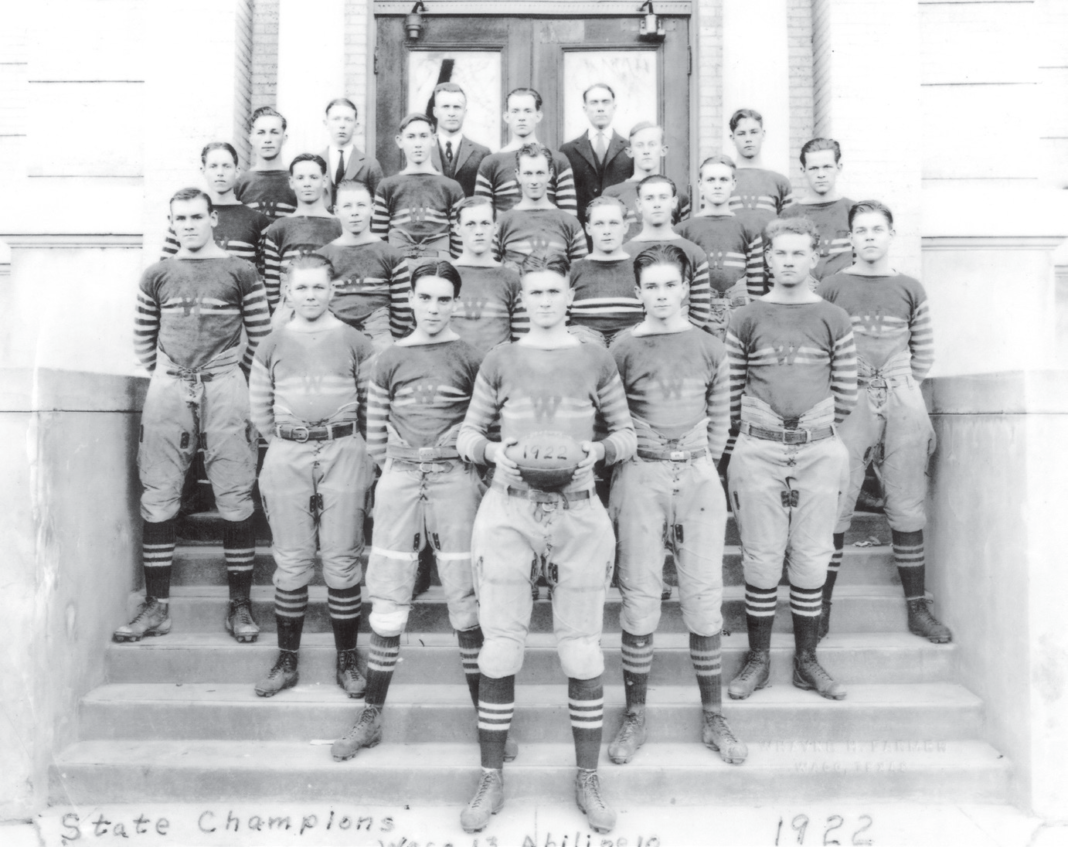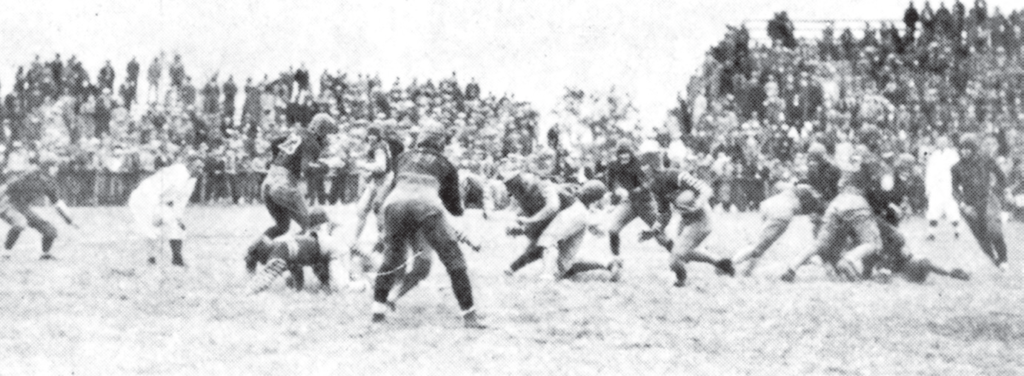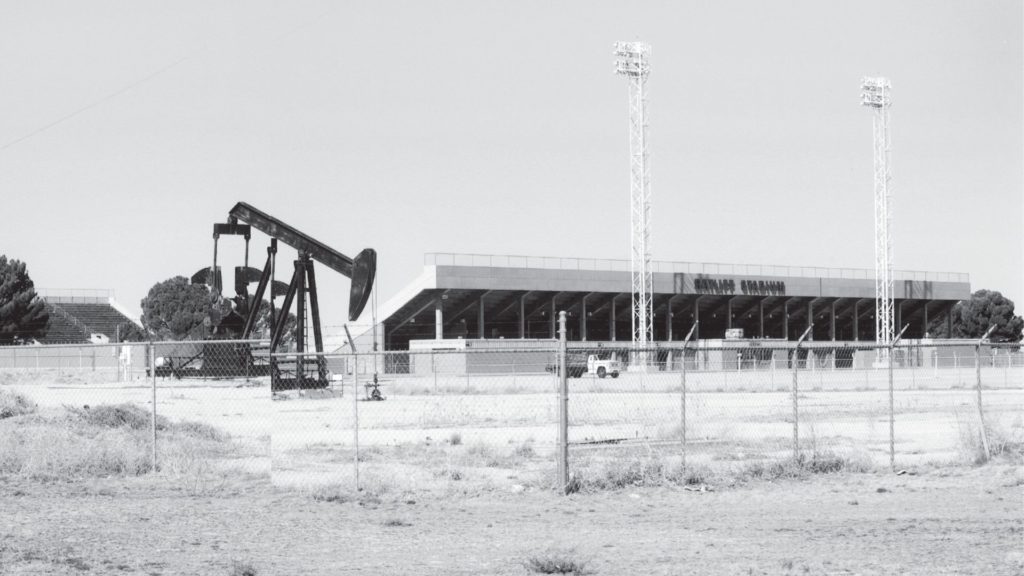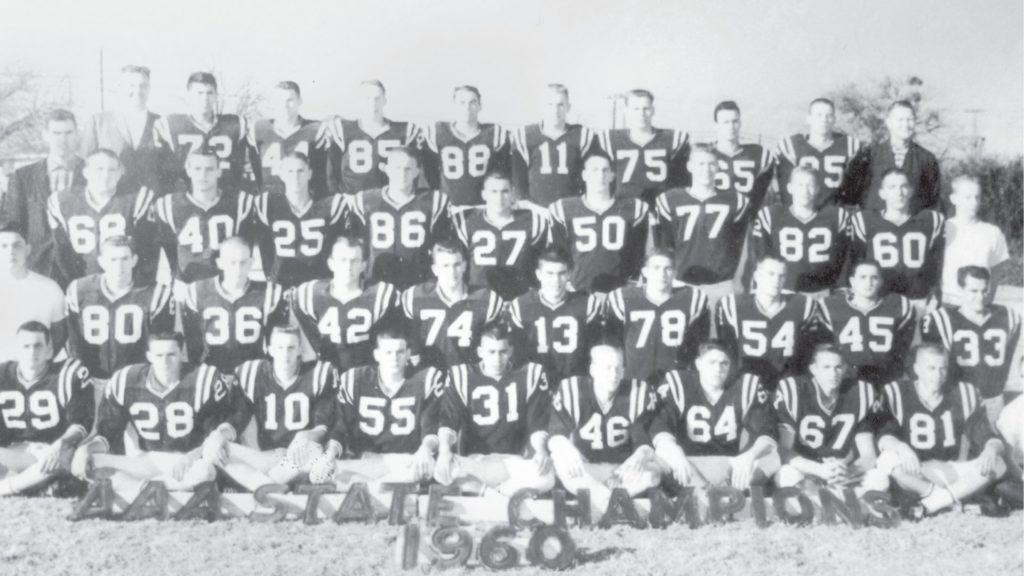
“If you want to understand Texas and Texans, watch high school football.”
— journalist Joe Nick Patoski
In the Lone Star State, high school football is king. From the smallest, most remote communities to the big, bustling cities, high school football brings communities together in intimate ways that start to resemble actual families. If you consider players, coaches, trainers, cheerleaders, groundskeepers, officials, not to mention the parents and fans, then that could be most of your small town. And cross-town rivalries last multiple generations, ensuring strong tribal connections for the team and fans passed down through a community’s history.
In the nearly 100-year history of high school football in Texas, only 204 teams have made the finals more than once, and only twenty-six teams have made it to championships at least four times. So the true legendary high school football programs are only found in these extremely rare, top-of-the-top spots — the so-called “Four or More Club.”

Origins
Waco, that remote, Central Texas town, not known for much, is the home of the big Texas high school football program. The first, multi-winning team of the newly formed University Interscholastic League (UIL), was the Waco High Tigers. In the 1920s, they rose to prominence under coach Paul Tyson, who would soon be dubbed the “Waco Wizard.”
Coach Tyson took the Tigers to seven state finals, with 6 being consecutive. After winning a national championship in Ohio, the team’s greatness was news throughout Texas and the nation, capturing the imagination of sports fans everywhere, and is credited with popularizing the sport in other communities that would later have their own high school football programs.
Petro-Dynasty

As championship football increased in importance to small communities, civic leader would seek ways to recruit better players. Oil boom towns lured the parents of promising players with attractive jobs. Oil rich communities like Odessa could also build tremendous football stadiums too. These oil town teams would beat big city teams, but the UIL eventually tightened eligibility requirements. So legendary were those teams, they inspired “Friday Light Nights,” the tale of blue-collar, oilfield-filled Odessa Permian, where football became everything.
Celebrate and discover history on the Grid Iron in Texas High School Football Dynasties by Rick Sherrod
Metro-Dynasty
After the UIL fine-tuned their school classification system, teams would only play similar-sized schools, making rivalries more equally-matched. Texas’s big cities saw a large increase in population is the 1970s, which meant more students in the inner city schools. Higher population, higher median household income, means more tax money for facilities and staff. Dallas suburb Garland established this model first. Winning two state championships in the 1960s, the Garland Owls showed the rest of the state that the right coach is most important element to winning state championships.

The 1960 state-champion Brownwood Lions pose for a team picture. These Lions brought Brownwood the first of seven state championships, marking the beginning of the Brownwood football dynasty.
Micro-Dynasty
Some communities built football dynasties without oil money or big-city diversity. Small and mid-sized Texas towns, like Brownwood merged their identities with their local high school football team’s fortunes. In the 1960s, Brownwood, smack dab in the middle of Texas, began a run that ended in seven state championships. Credit goes to Gordon Wood, who was the first coach to have five championships, and would have nine by the time he retired. His Lions put their town of Brownwood on the map!


